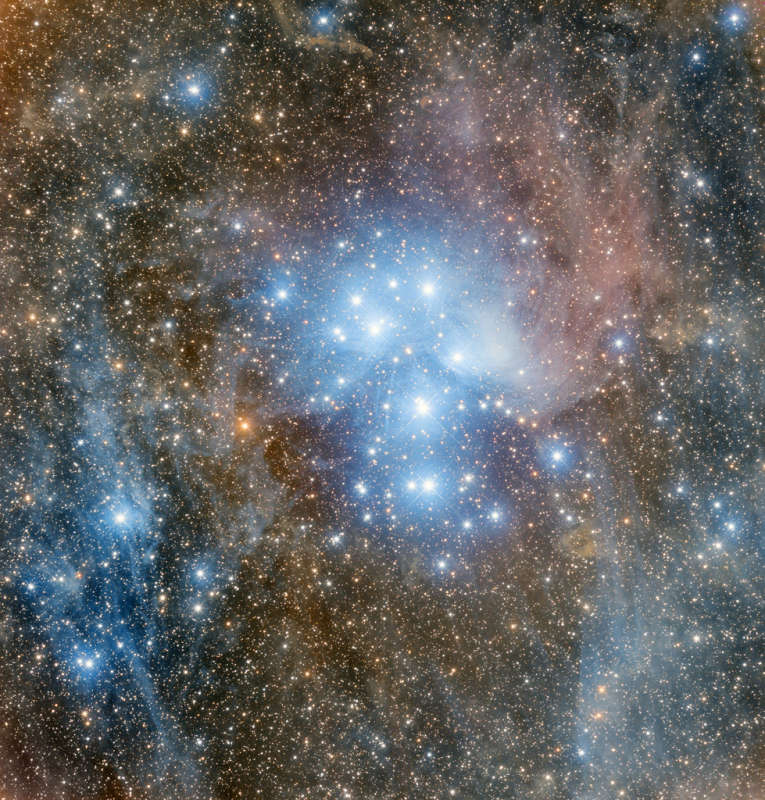Credit & Copyright: Adam Block,
Steward Observatory,
University of Arizona
Explanation:
Hurtling through a
cosmic dust cloud a mere 400 light-years away,
the lovely Pleiades
or Seven Sisters open star cluster is well-known for its striking blue
reflection nebulae.
It lies in the night sky toward the constellation Taurus and the
Orion Arm of our Milky Way Galaxy.
The sister stars and
cosmic dust cloud
are not related though, they just happen to be passing through
the same region of space.
Known since antiquity as a compact grouping of stars,
Galileo
first sketched the star cluster
viewed through his telescope with stars too faint to be seen by eye.
Charles Messier recorded
the position of the cluster as
the 45th entry in his famous catalog of things which are not comets.
In Greek myth, the
Pleiades
were seven daughters of the astronomical
Titan Atlas and sea-nymph Pleione.
Their parents names are included in the cluster's nine brightest
stars.
This deep and wide telescopic image
spans over 20 light-years
across
the Pleides star cluster.
1999 2000 2001 2002 2003 2004 2005 2006 2007 2008 2009 2010 2011 2012 2013 2014 2015 2016 2017 2018 2019 2020 2021 2022 2023 2024 2025 |
Январь Февраль Март Апрель Май Июнь Июль Август Сентябрь Октябрь Ноябрь Декабрь |
NASA Web Site Statements, Warnings, and Disclaimers
NASA Official: Jay Norris. Specific rights apply.
A service of: LHEA at NASA / GSFC
& Michigan Tech. U.
|
Публикации с ключевыми словами:
M 45 - pleiades - Плеяды
Публикации со словами: M 45 - pleiades - Плеяды | |
См. также:
Все публикации на ту же тему >> | |
